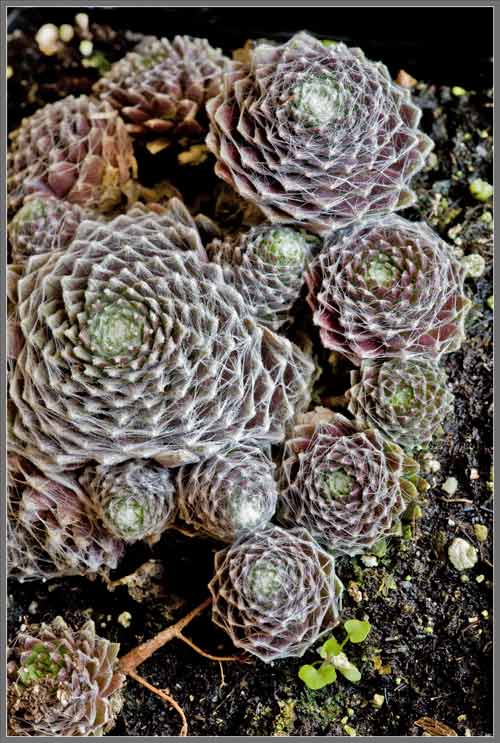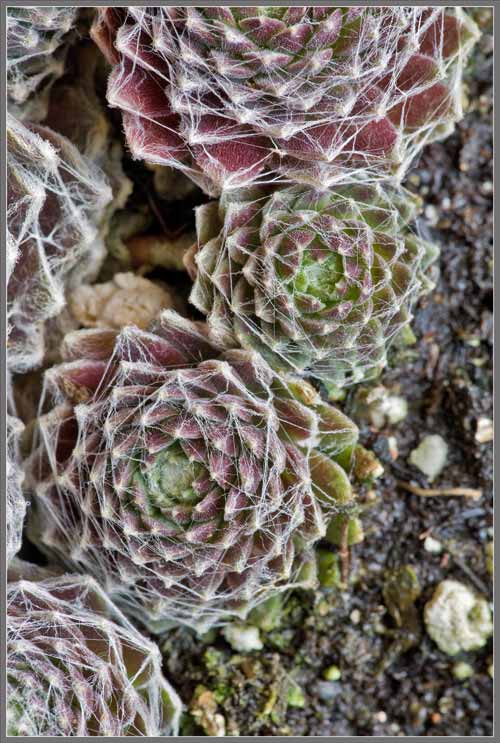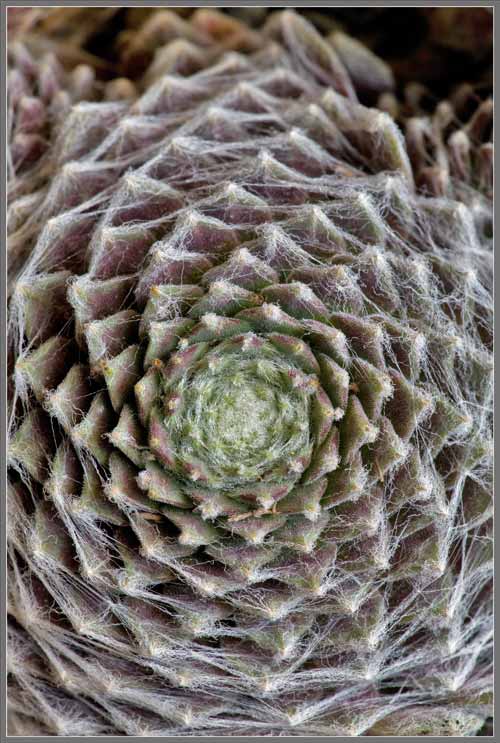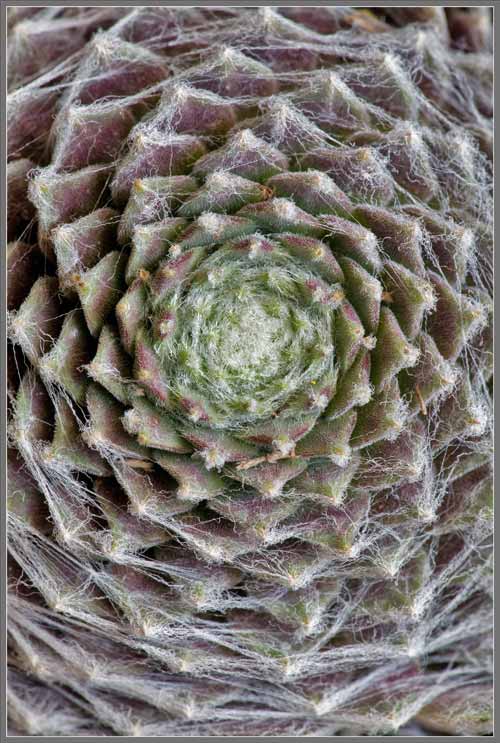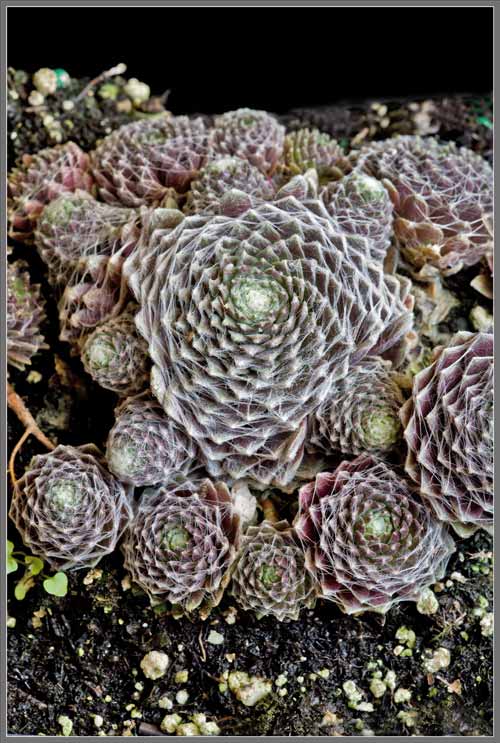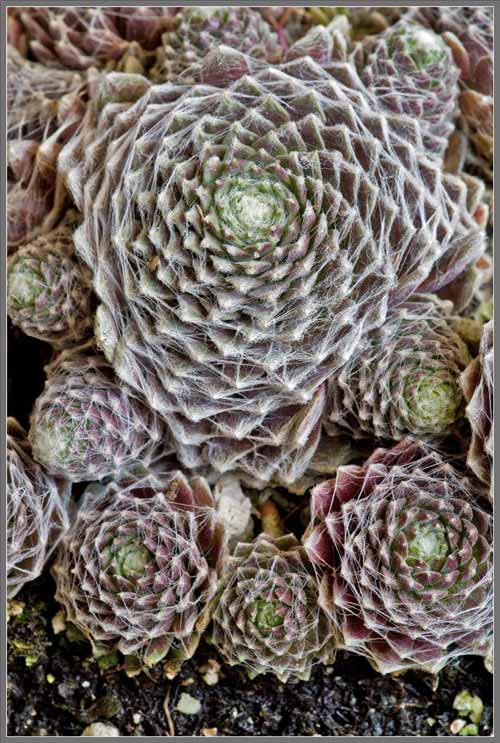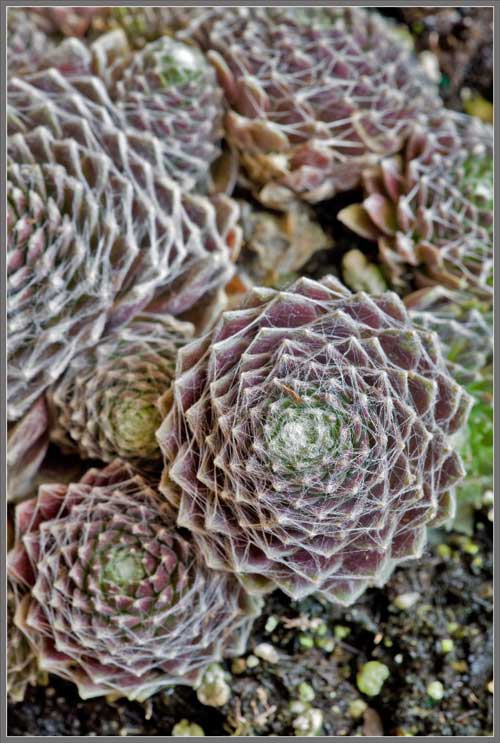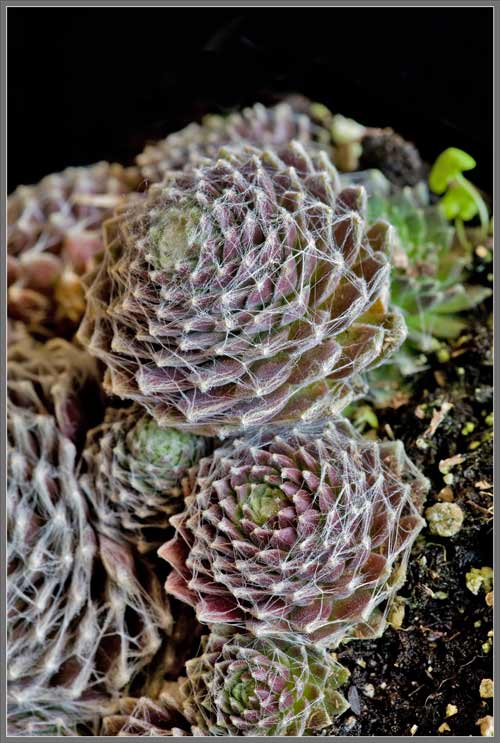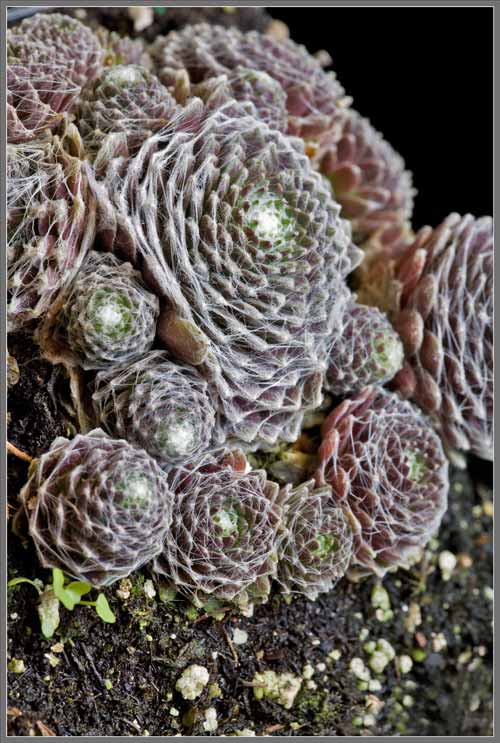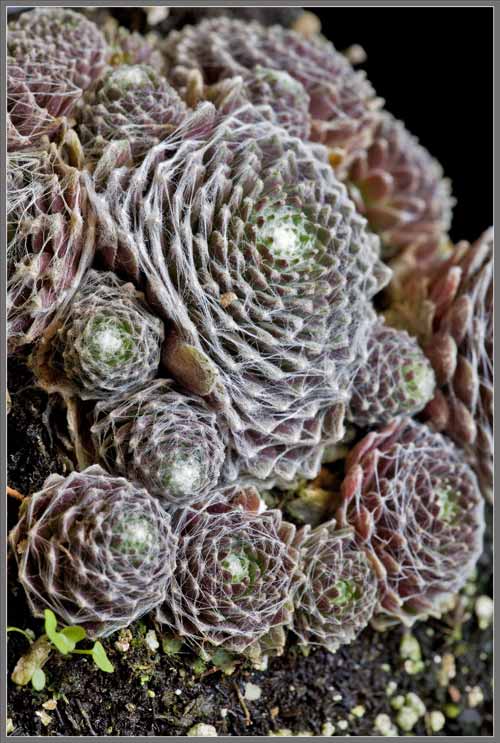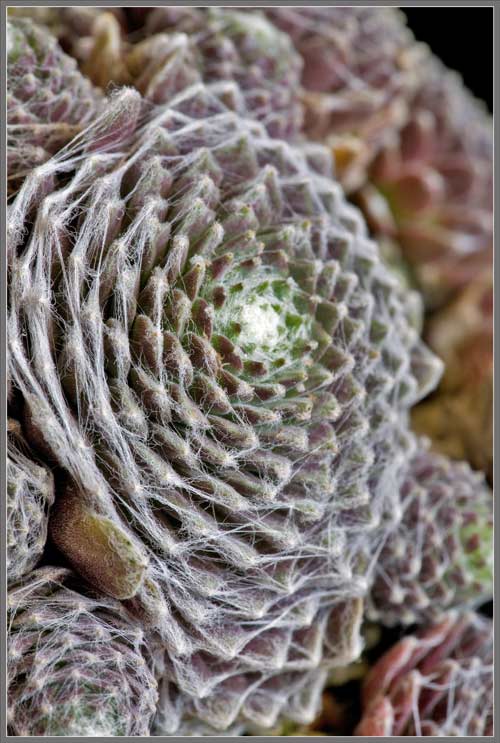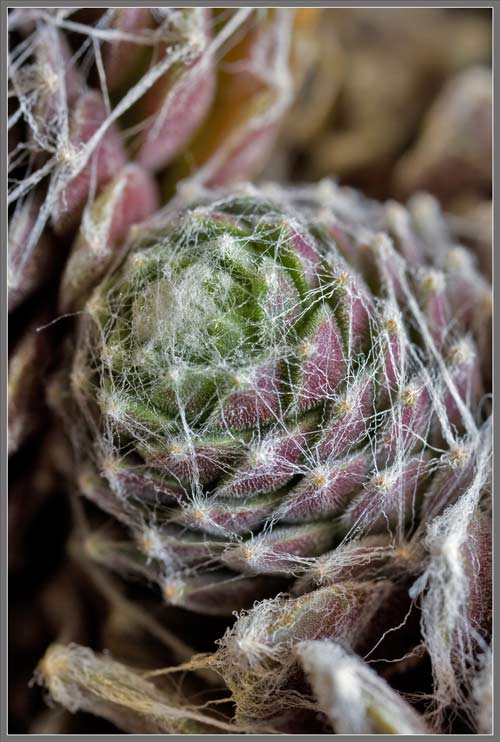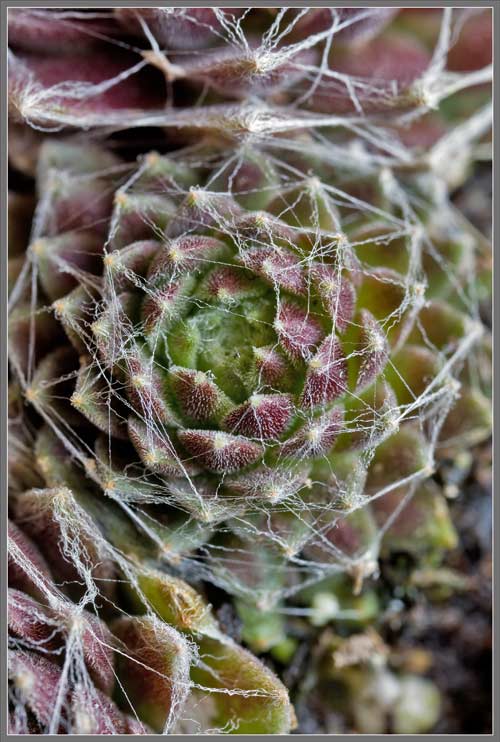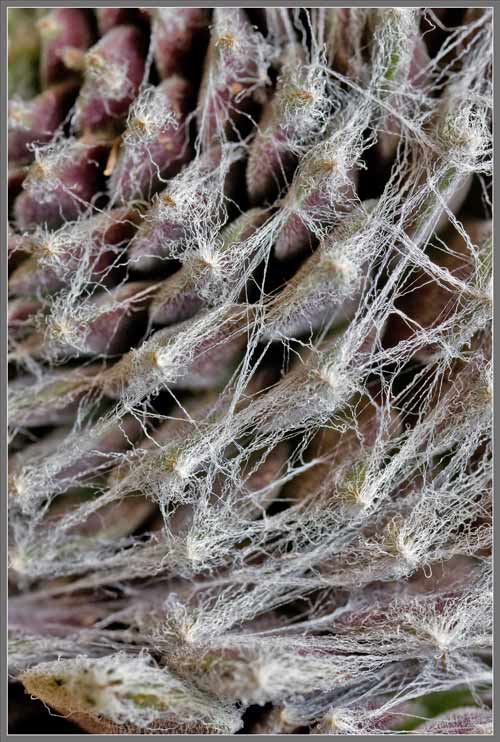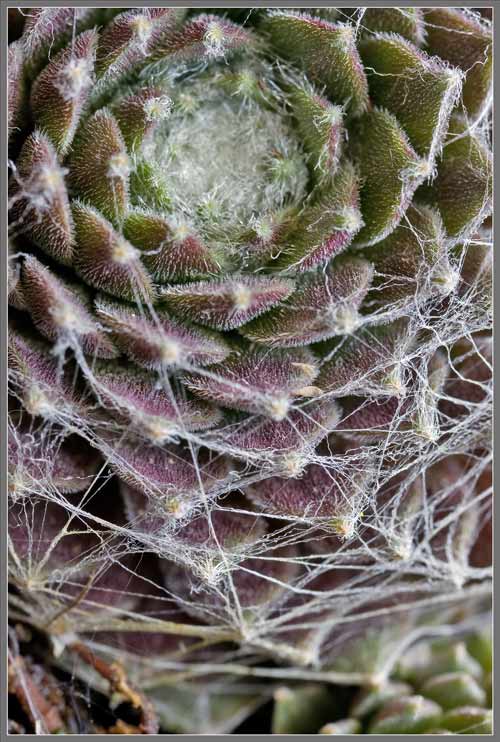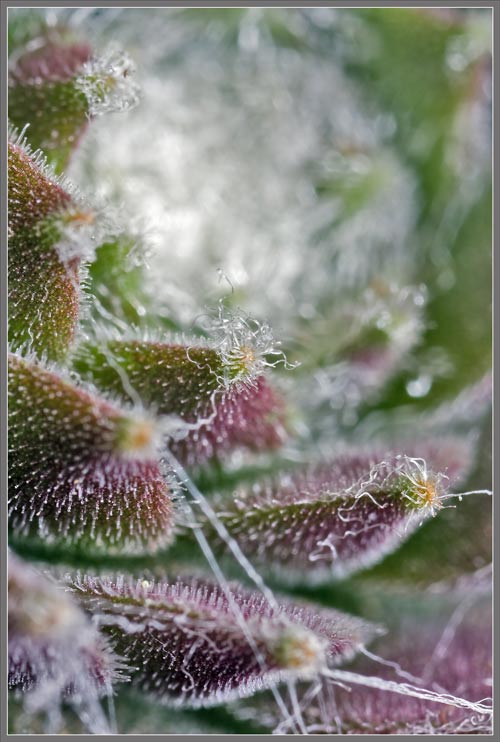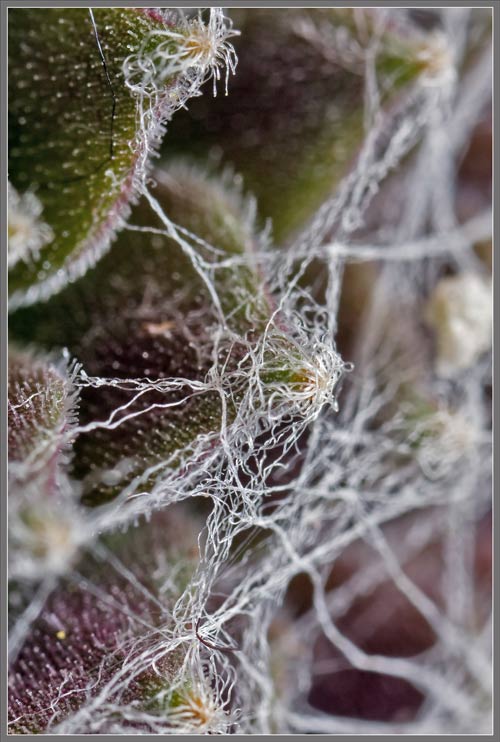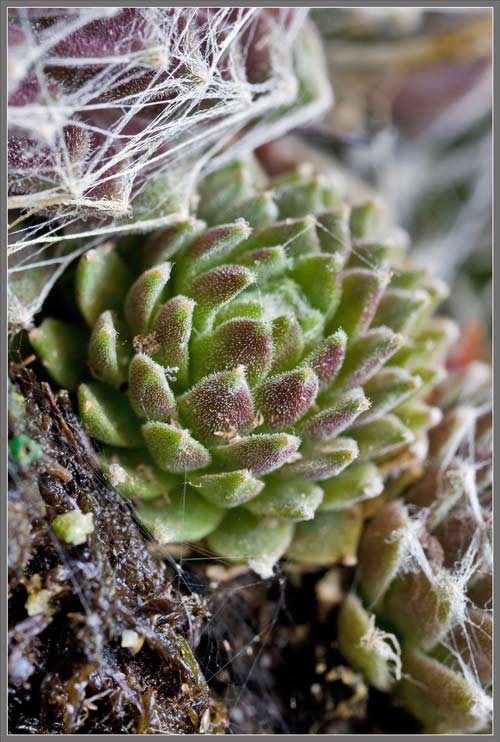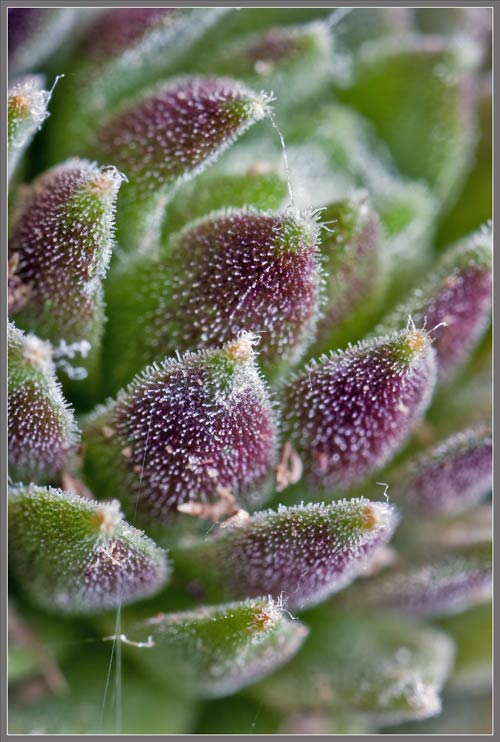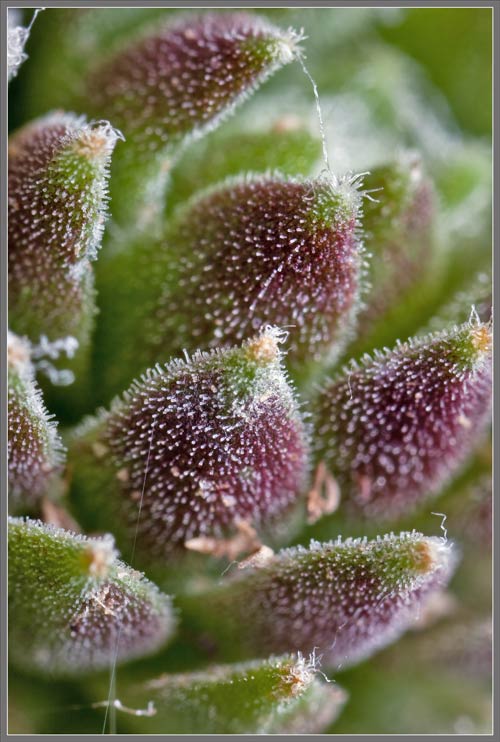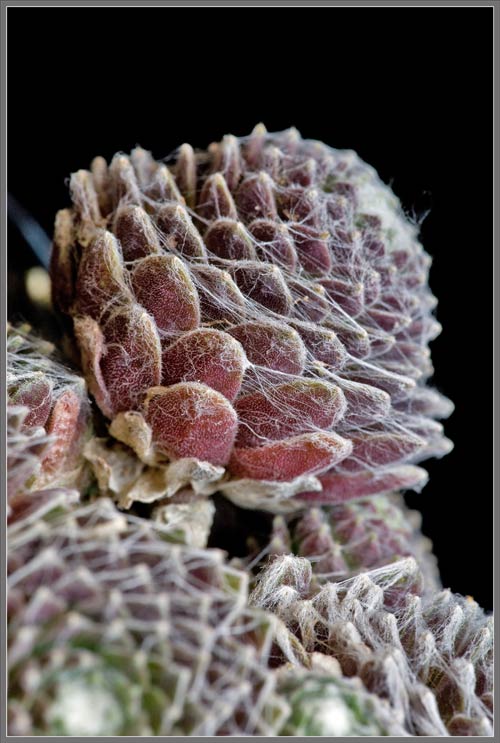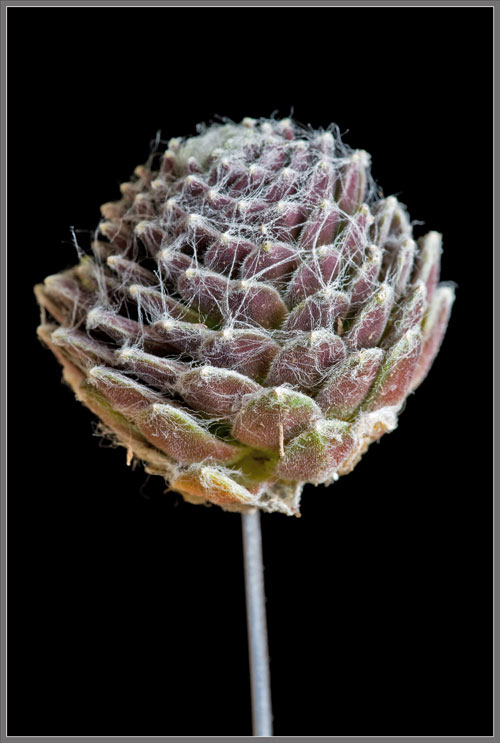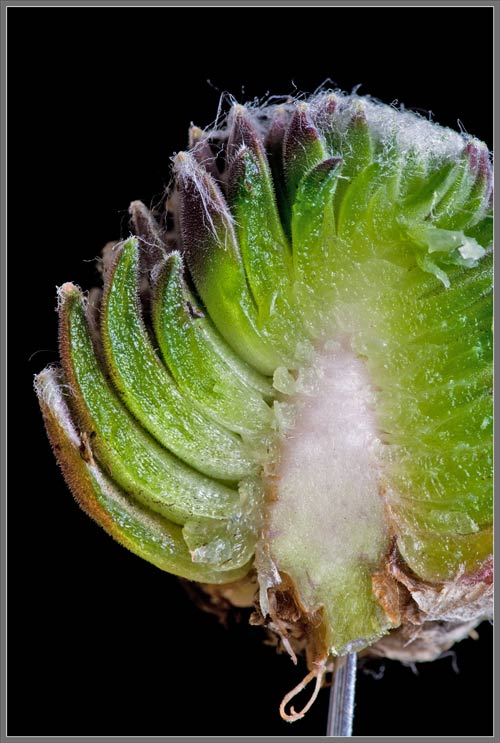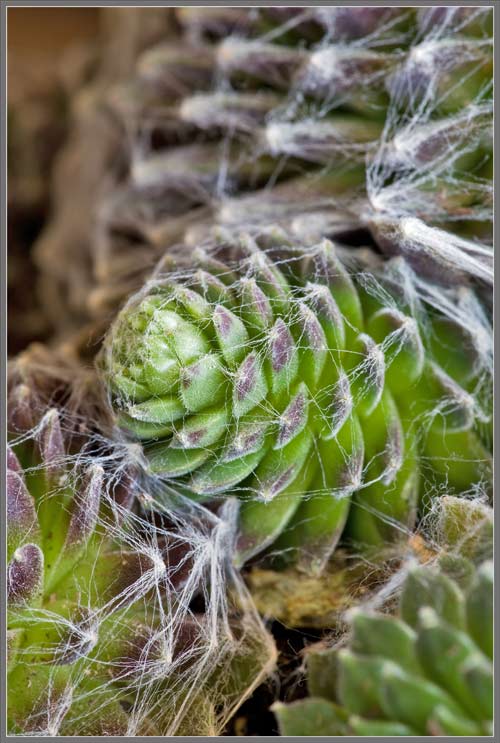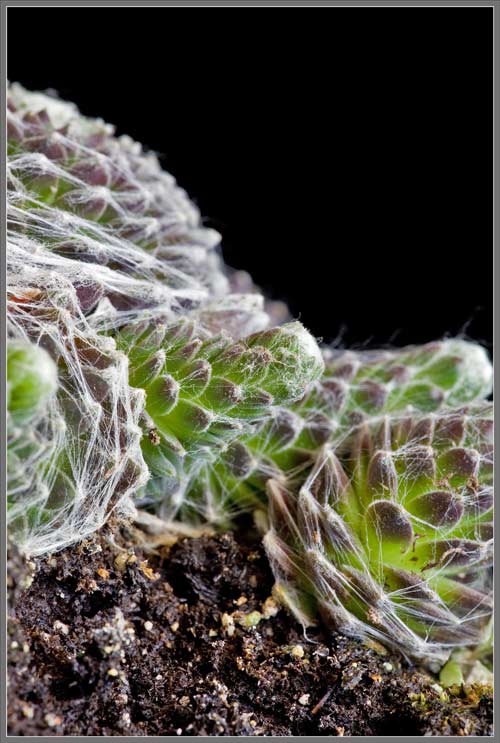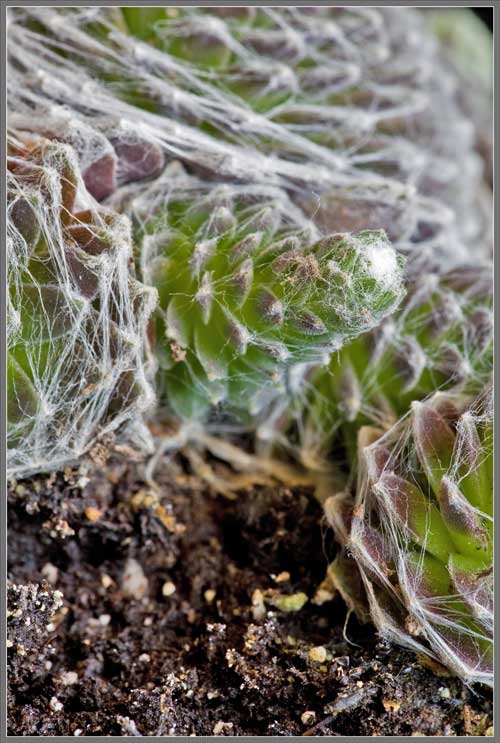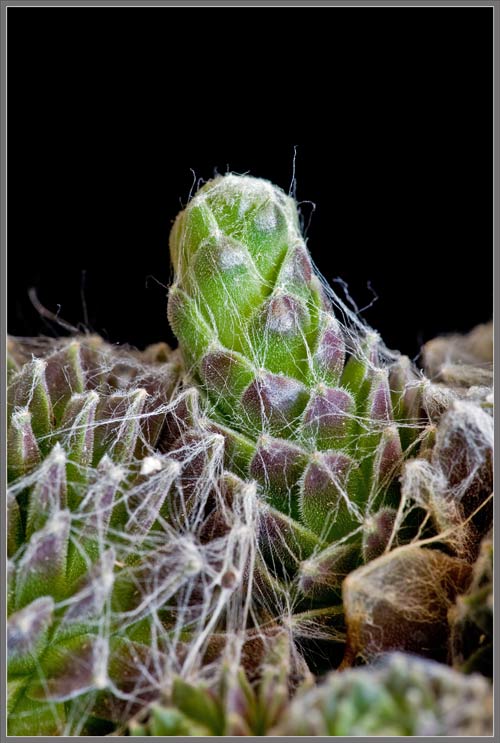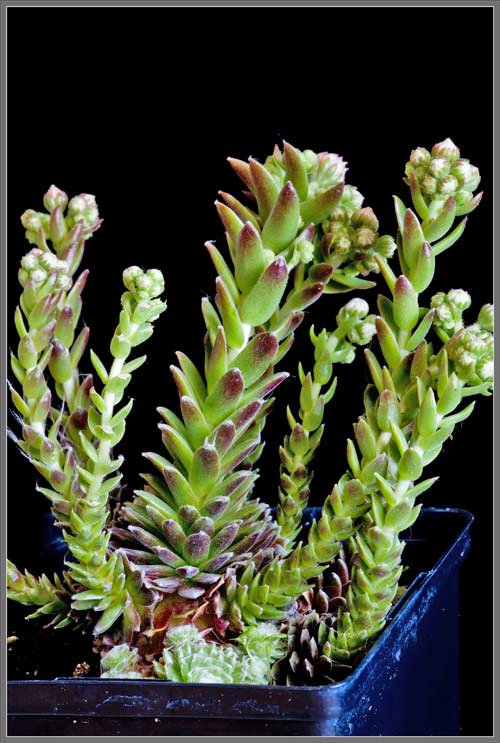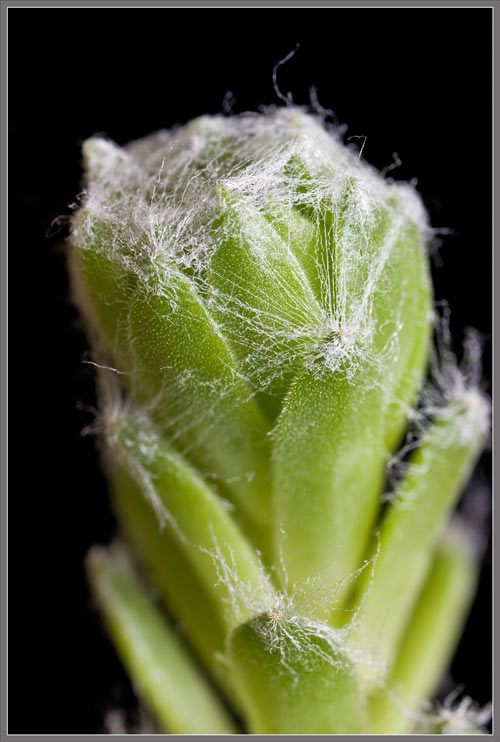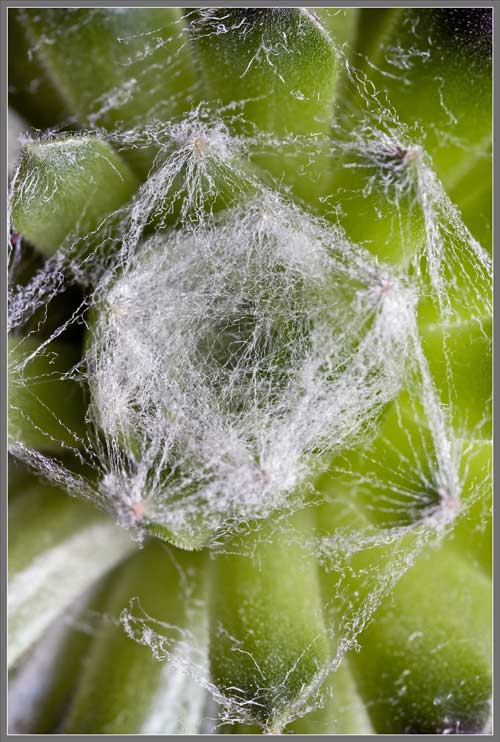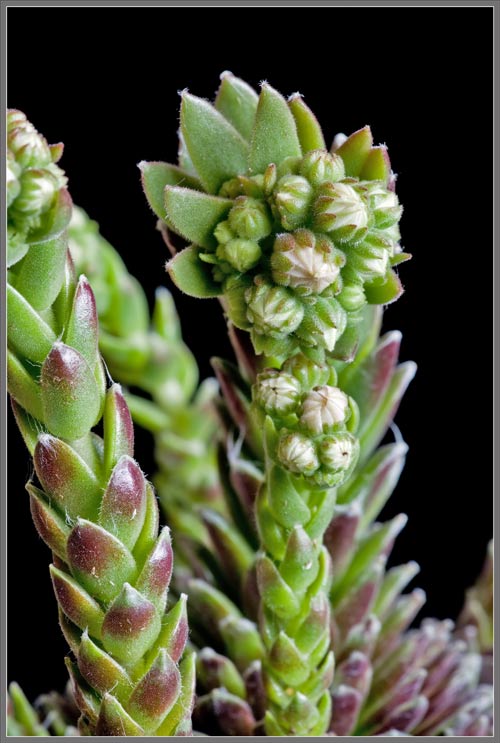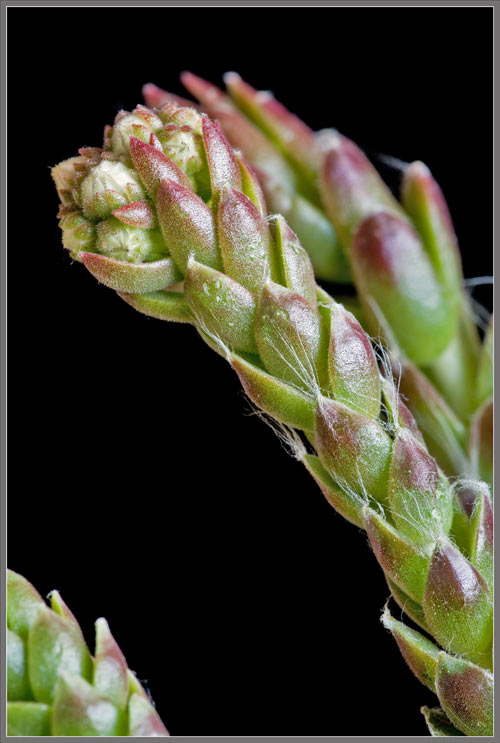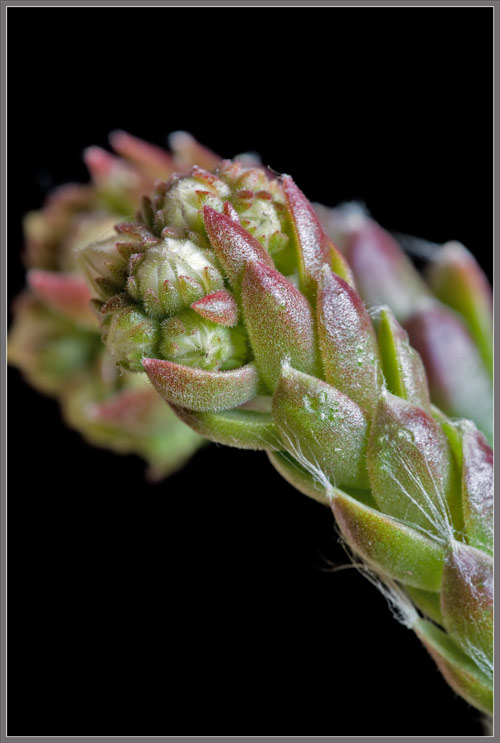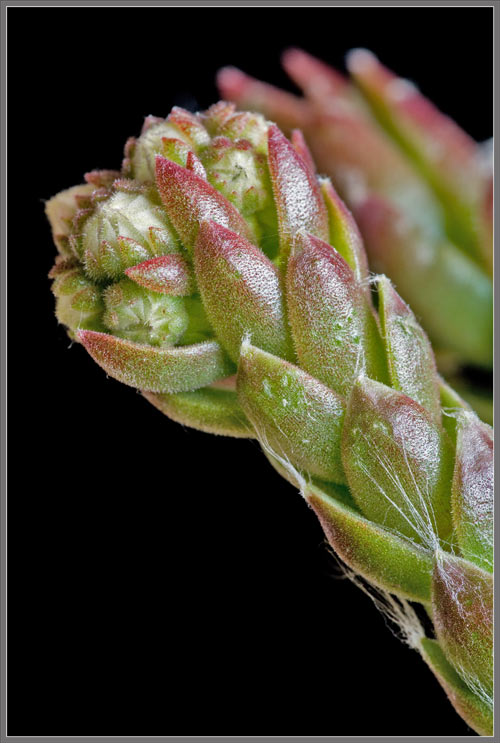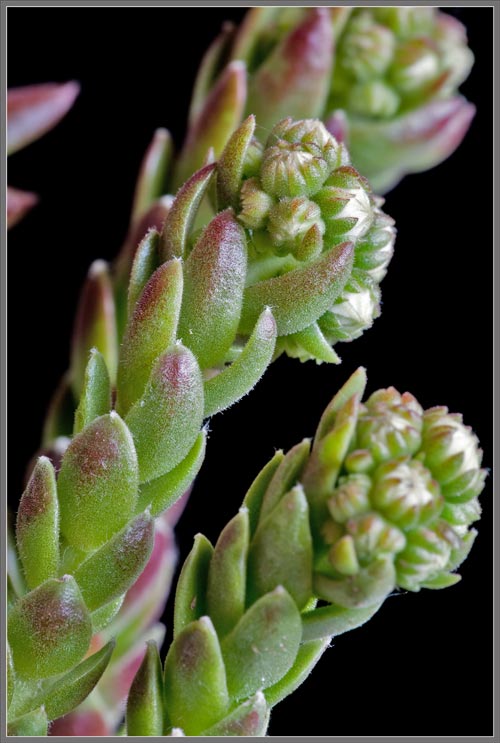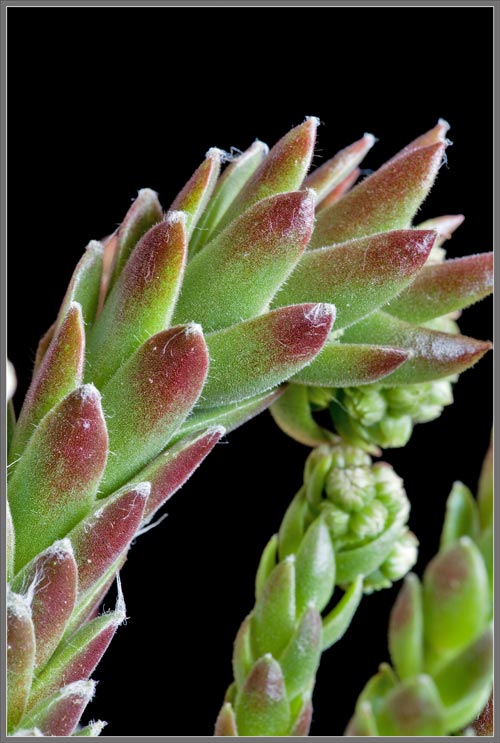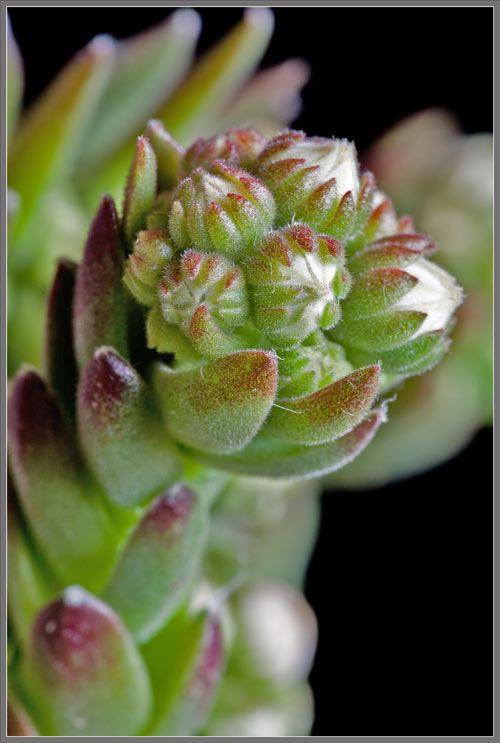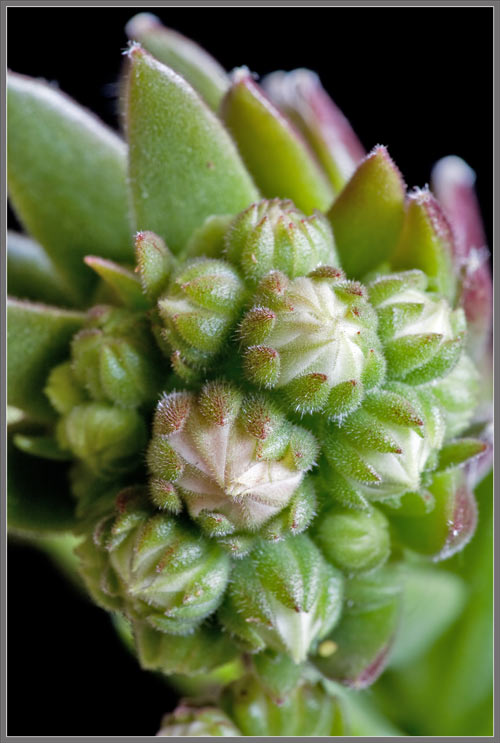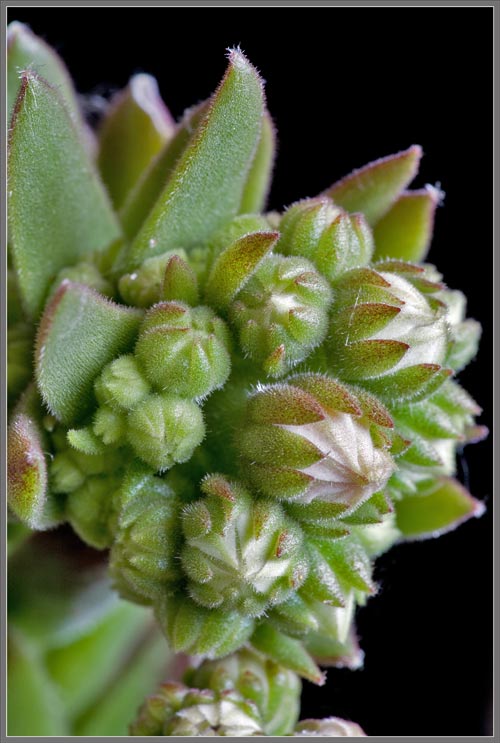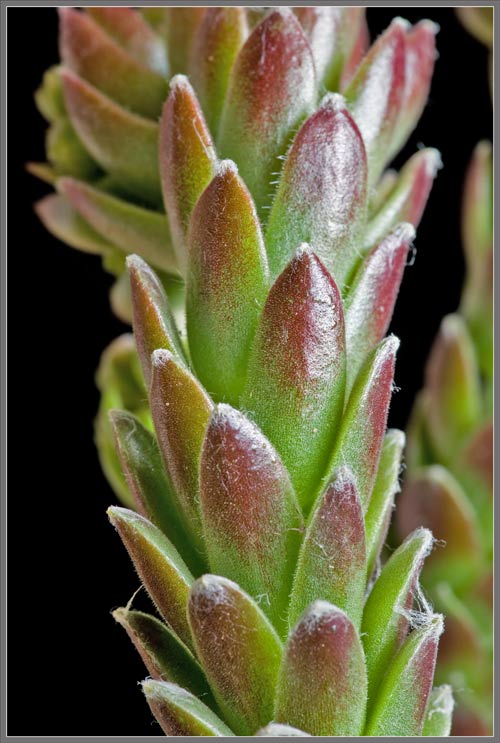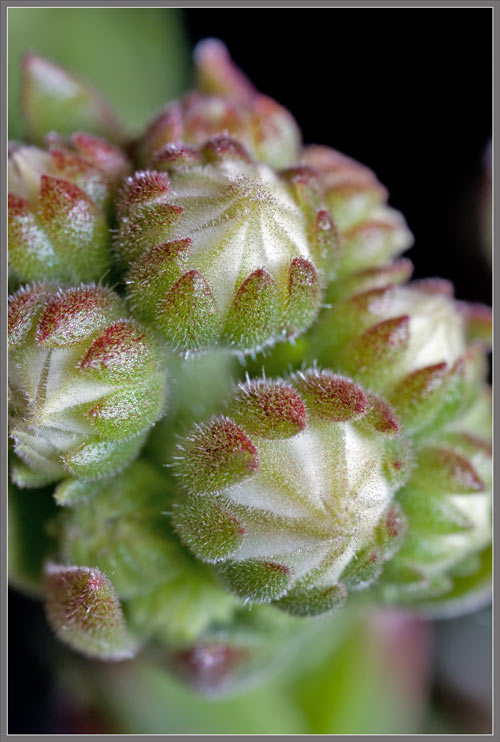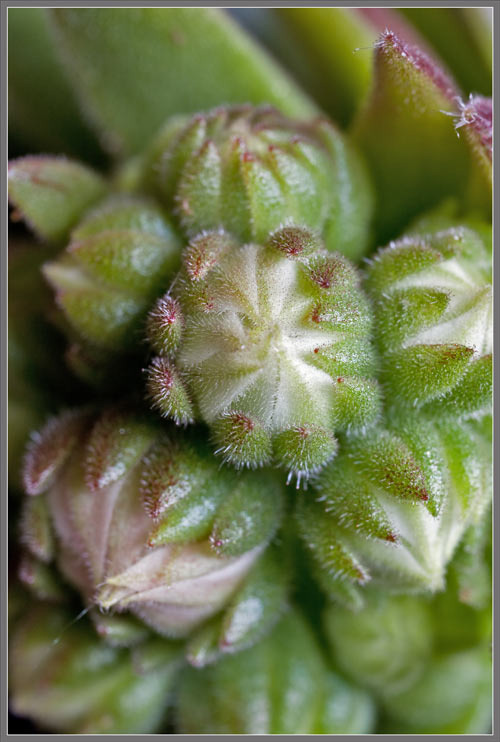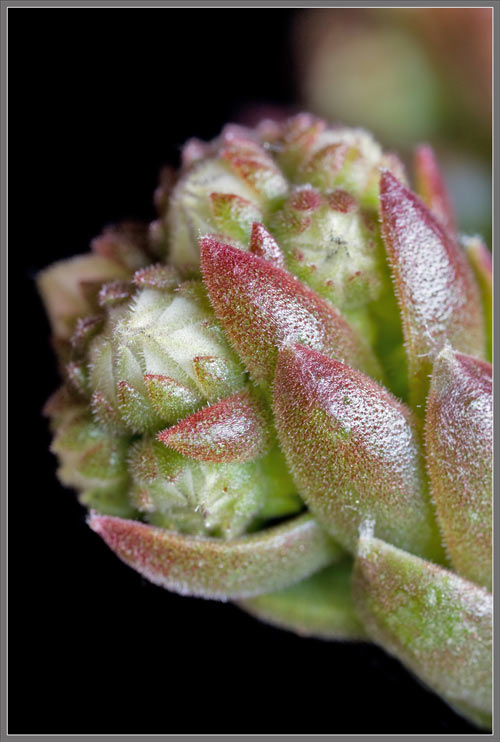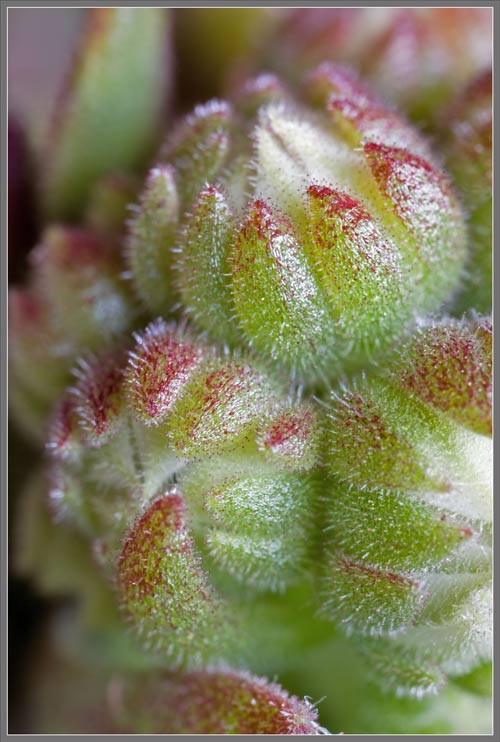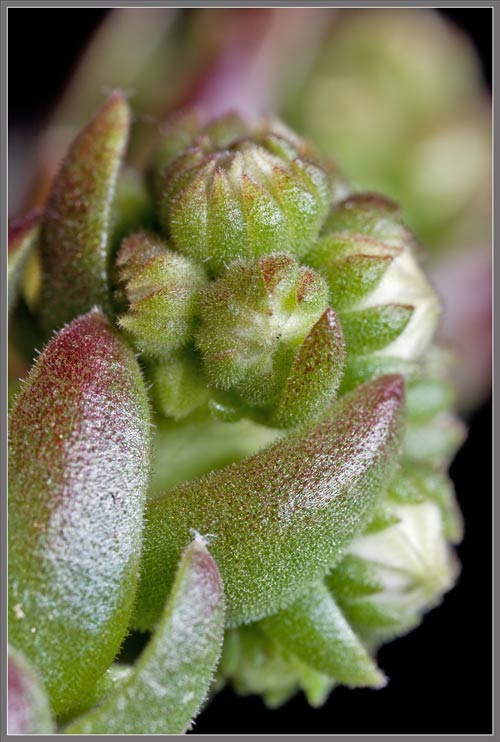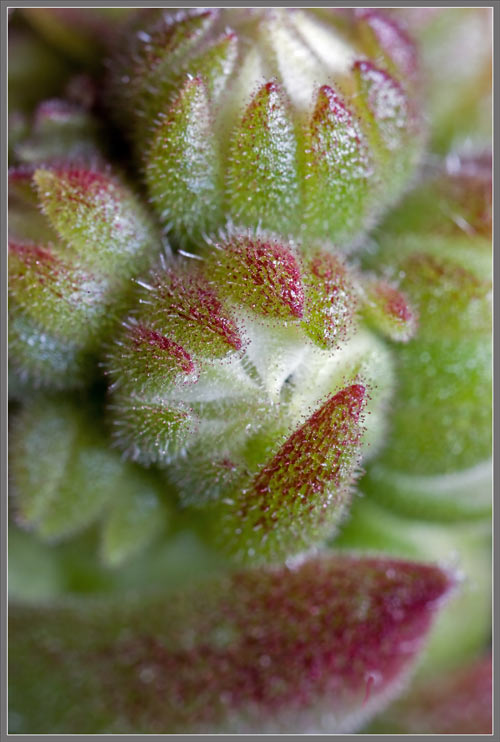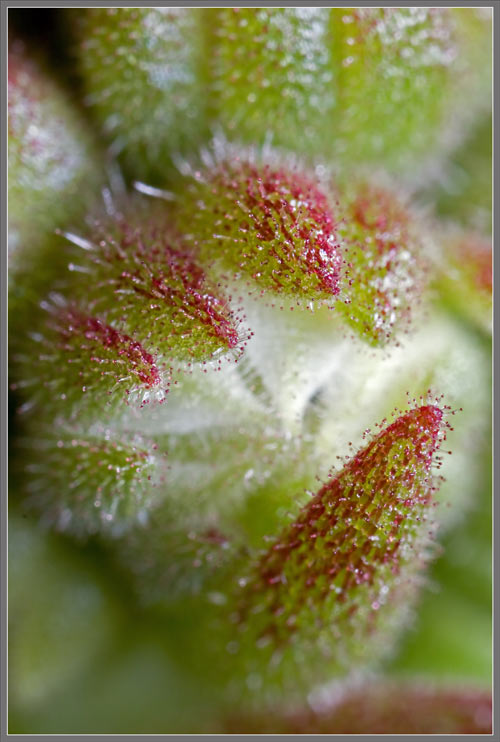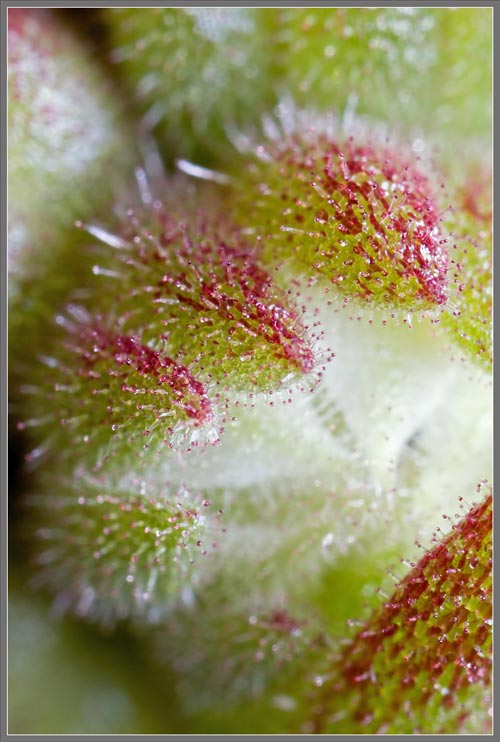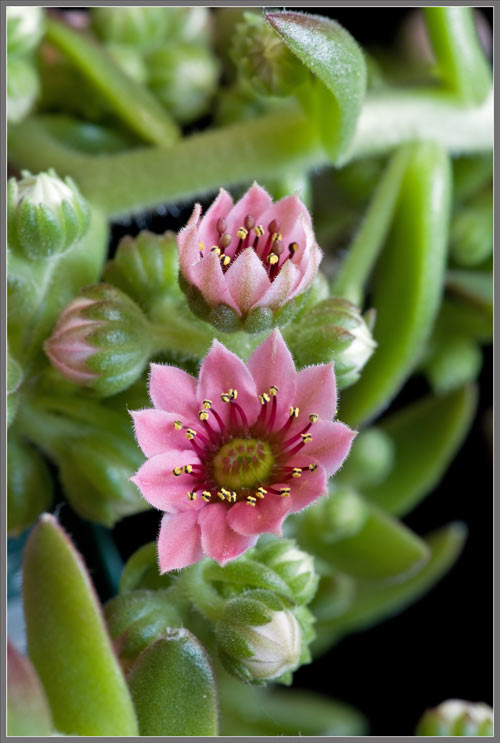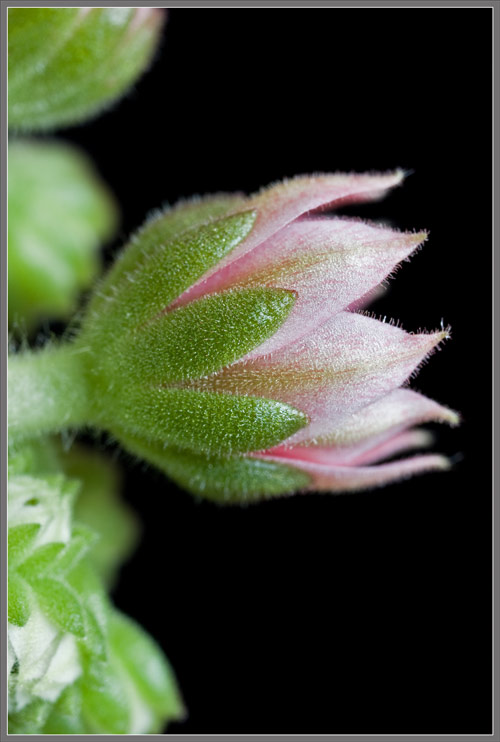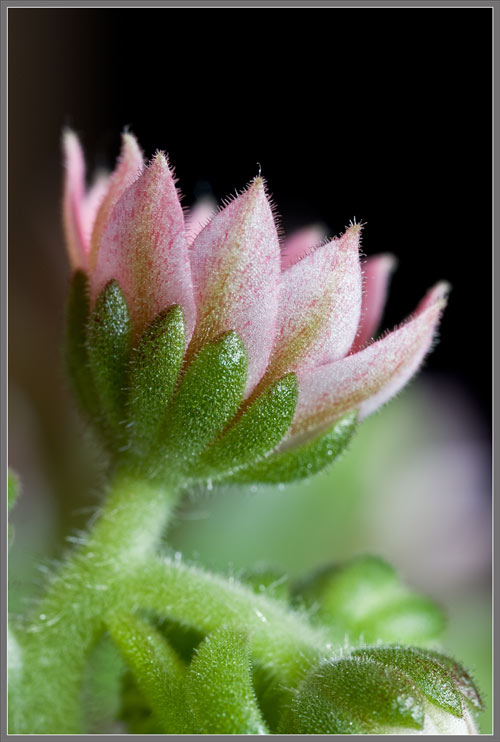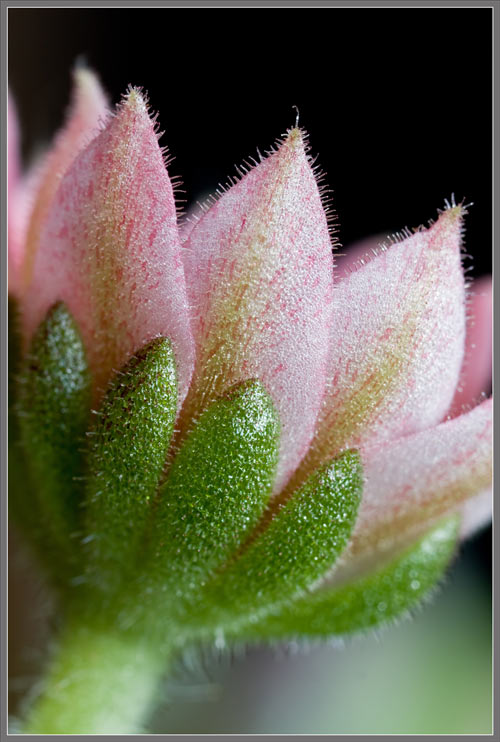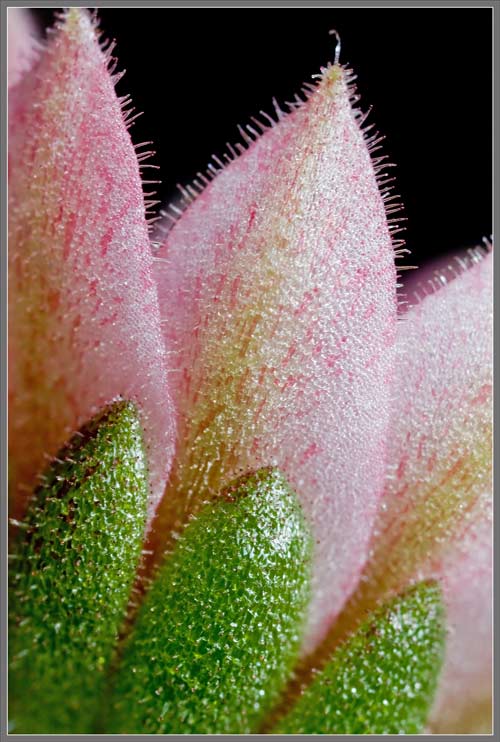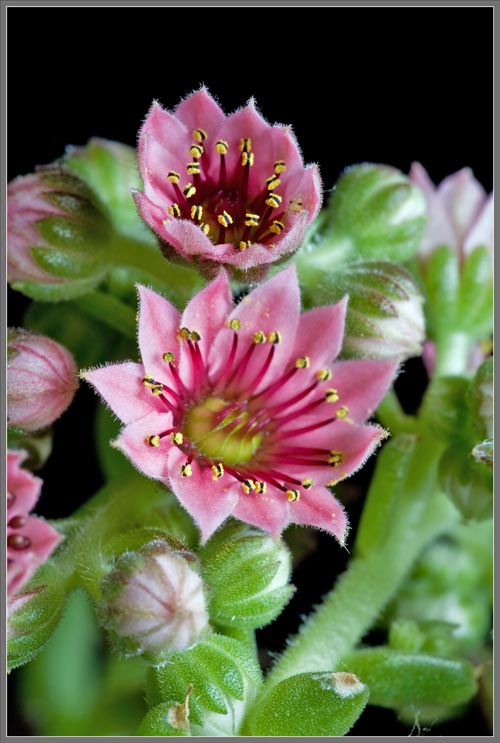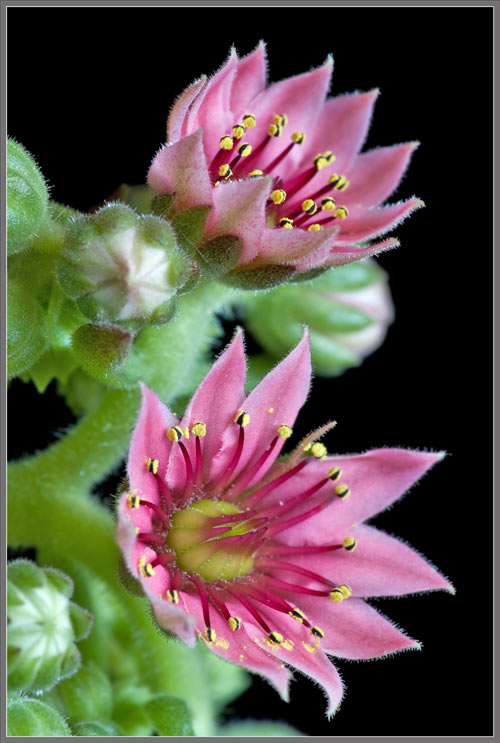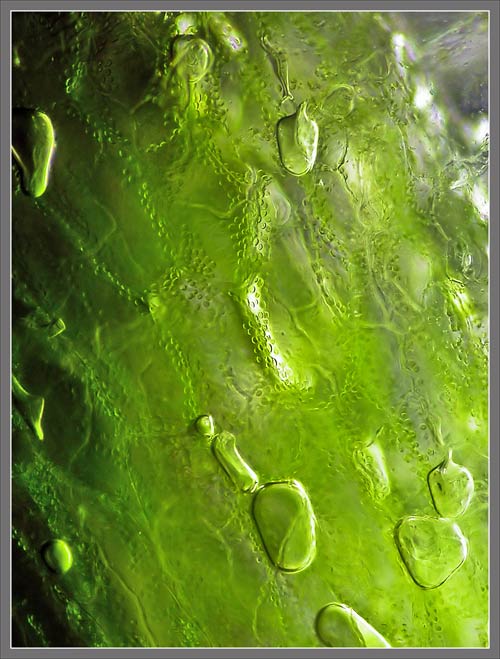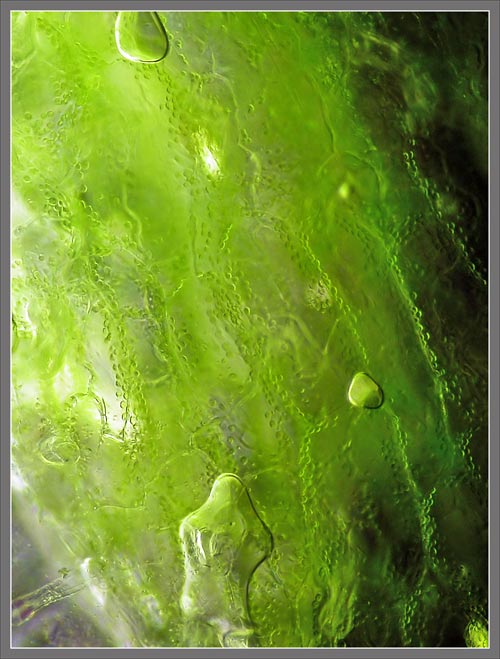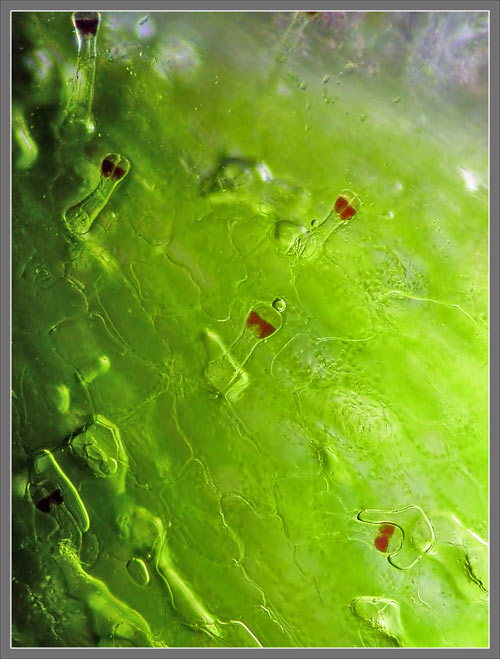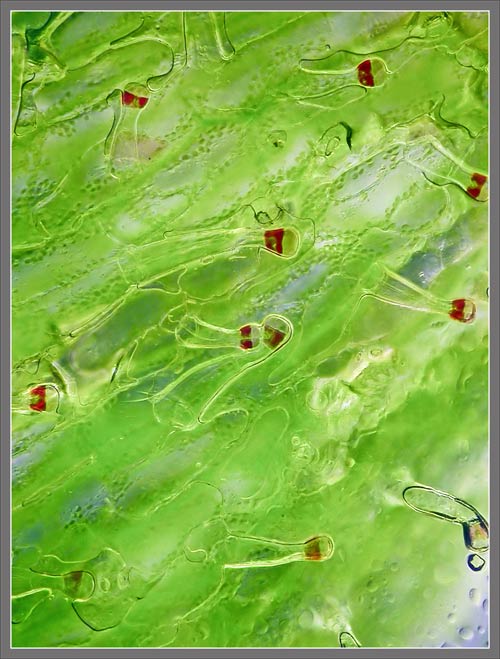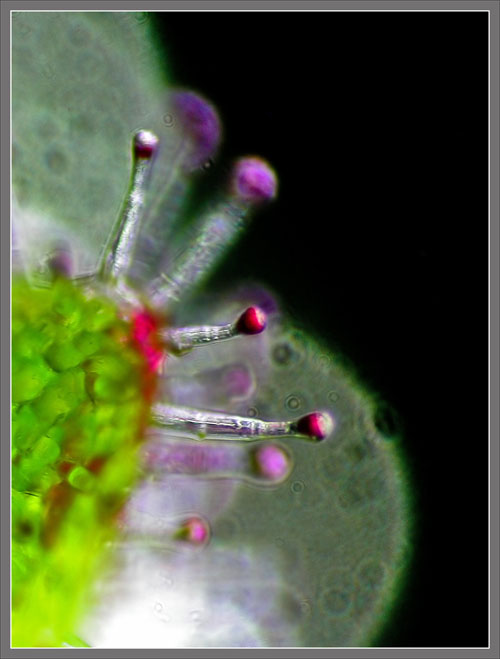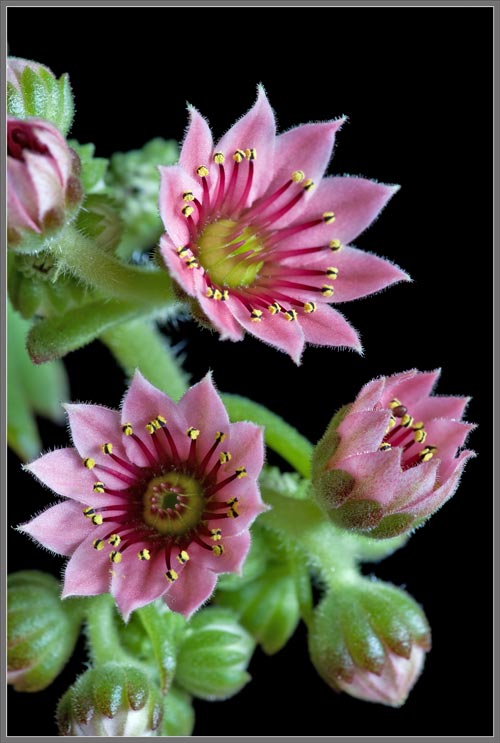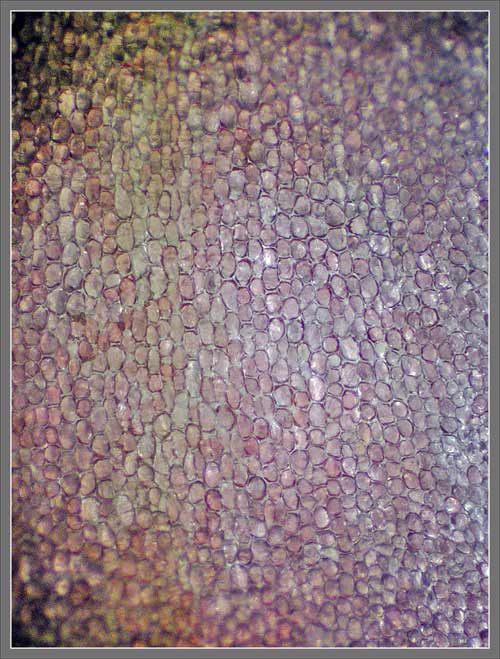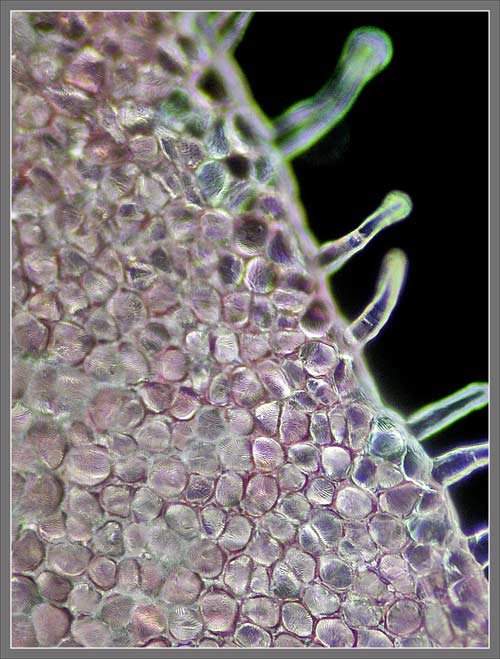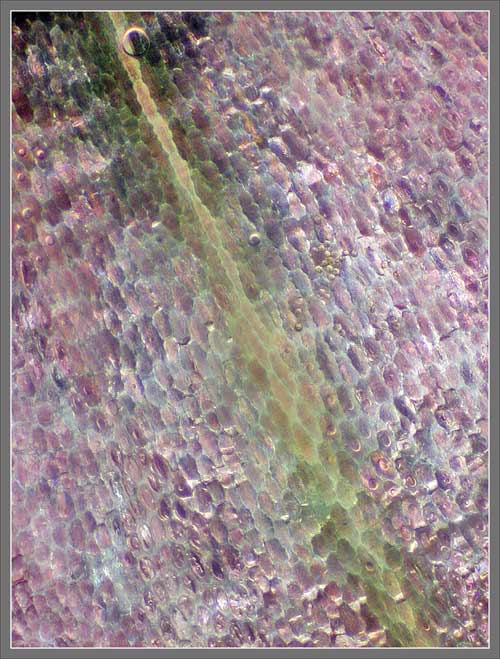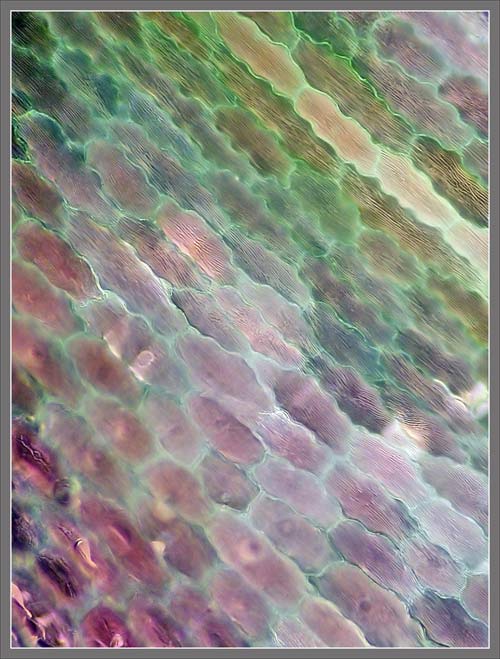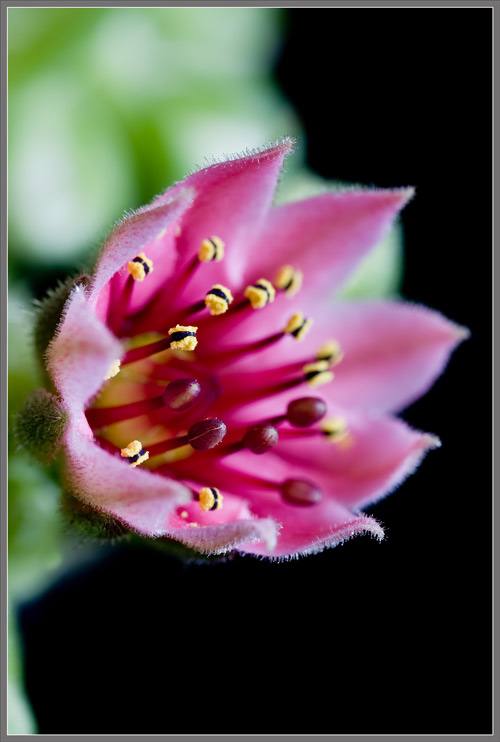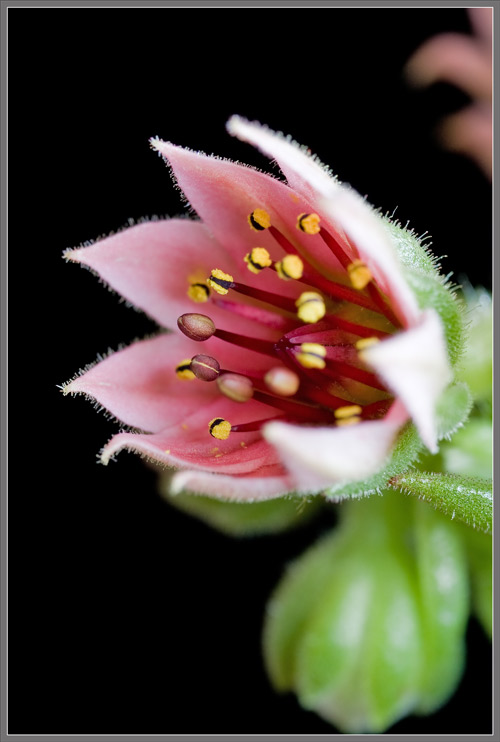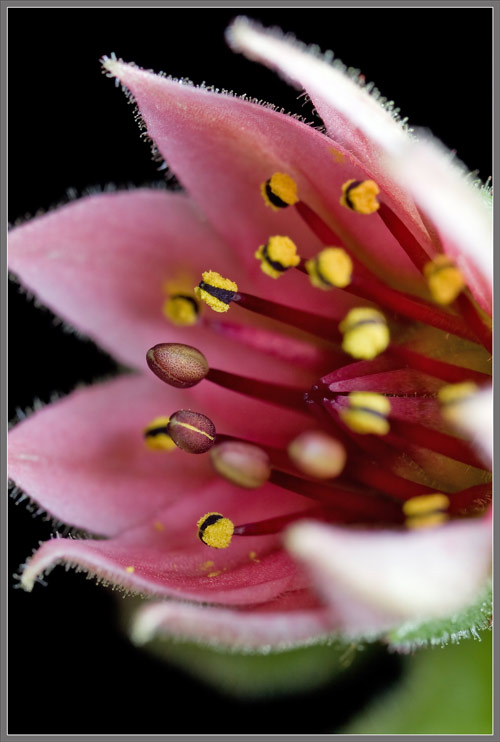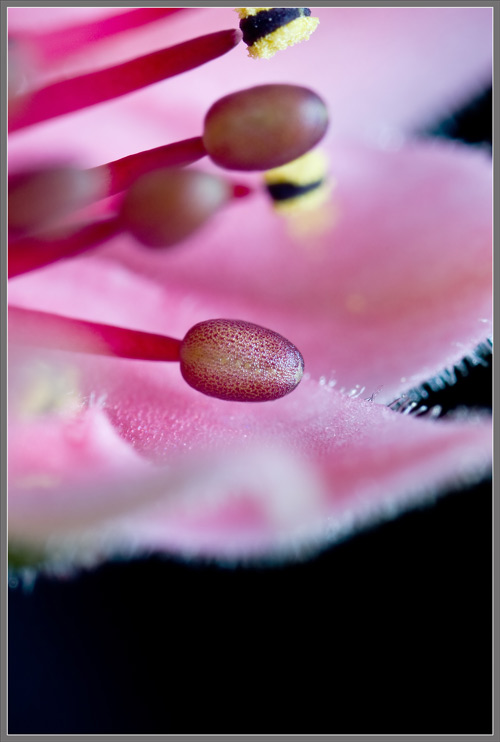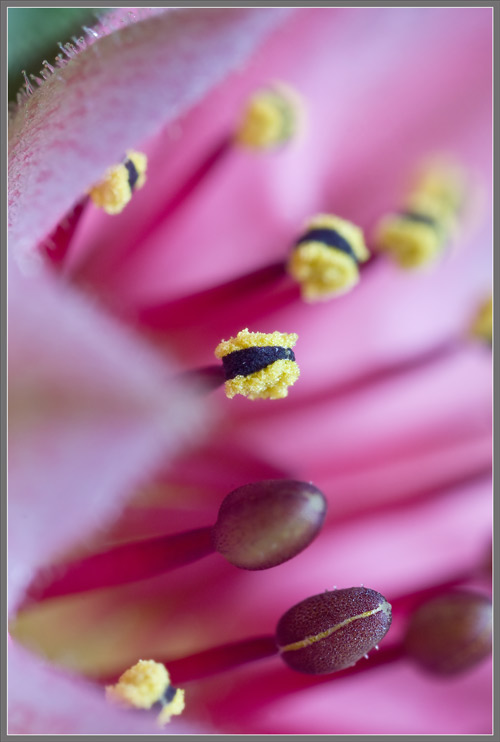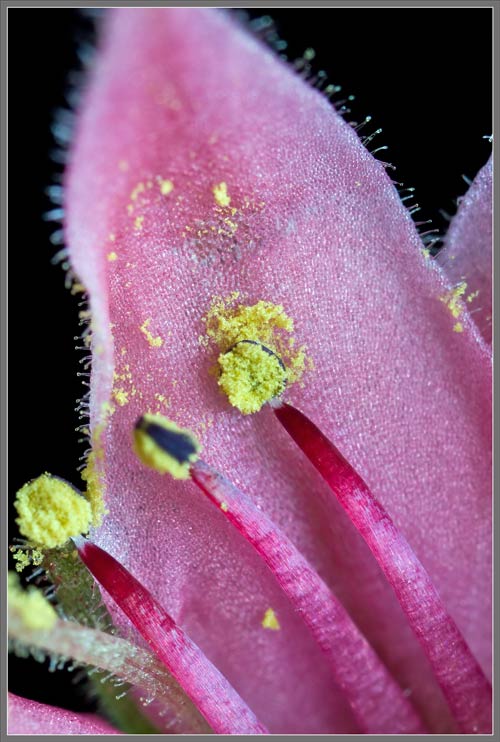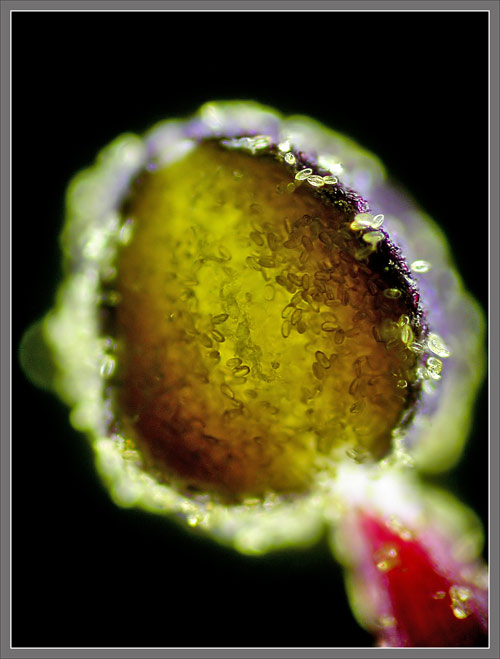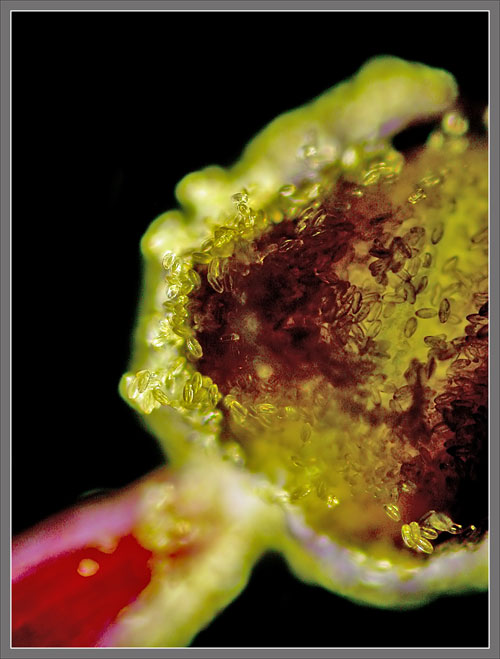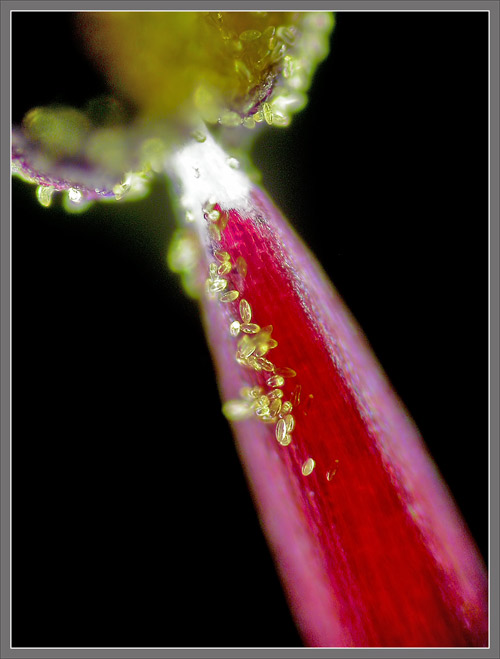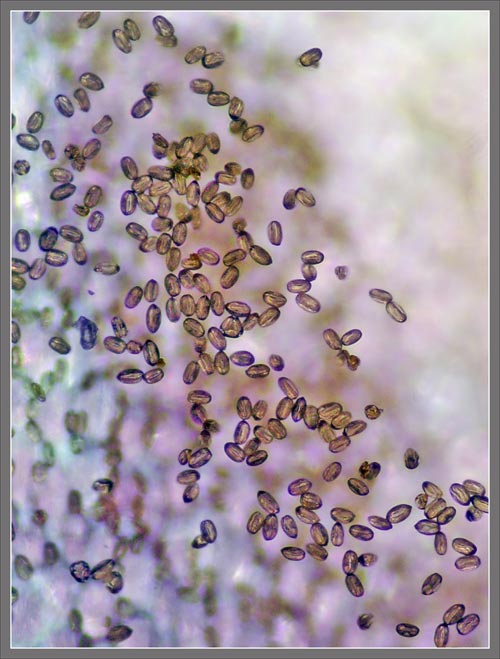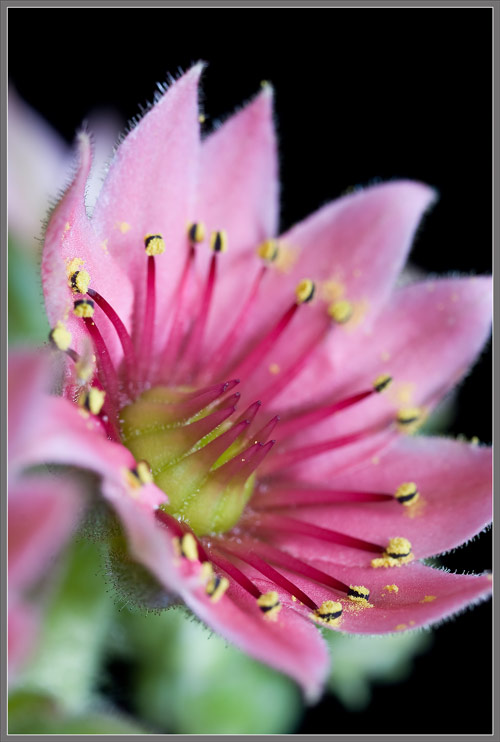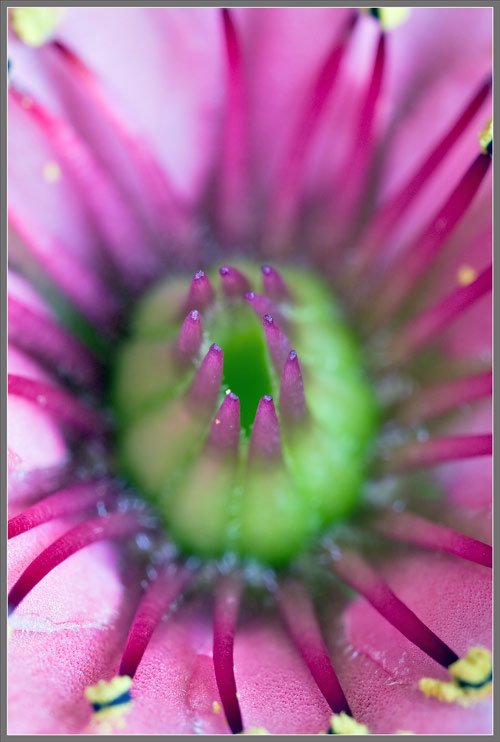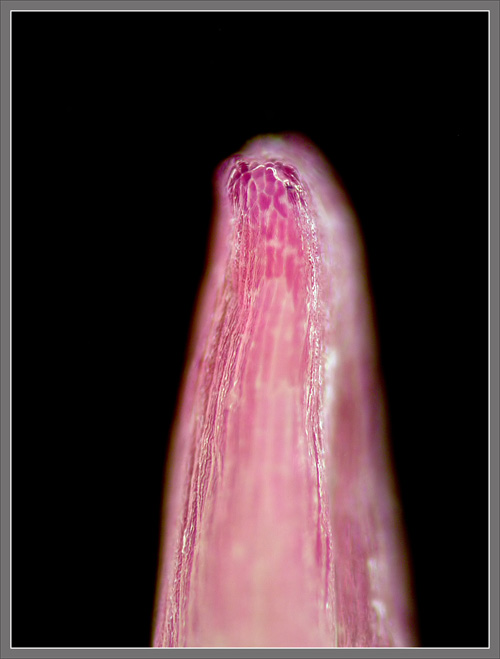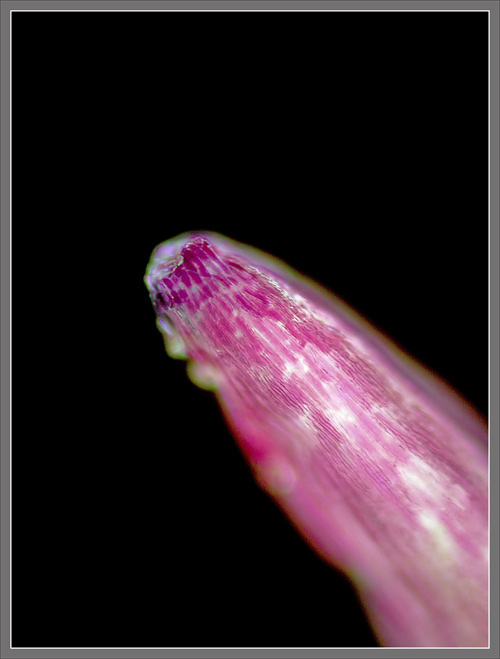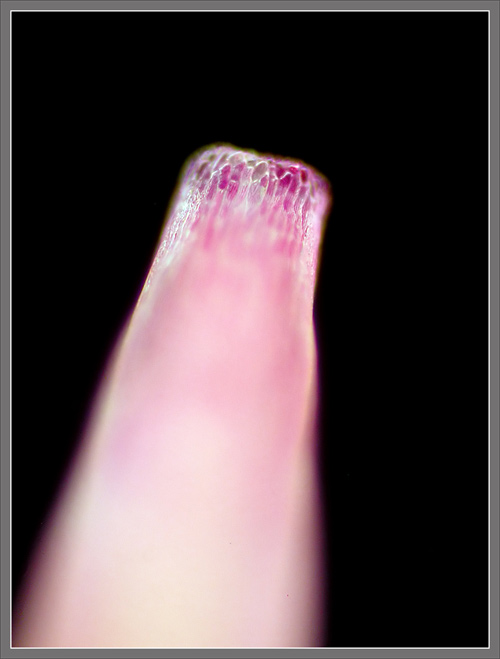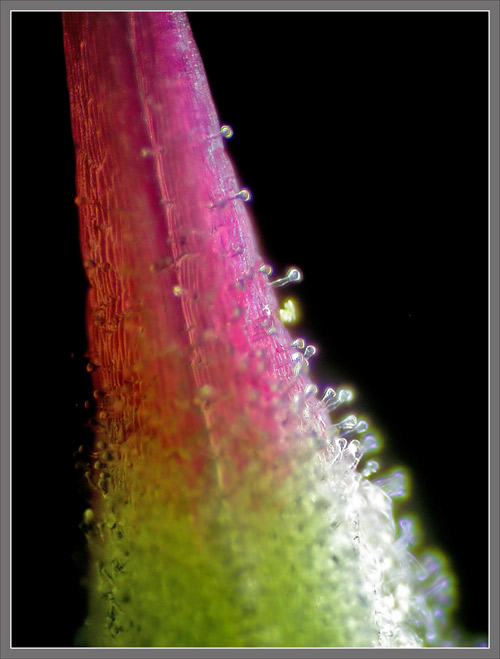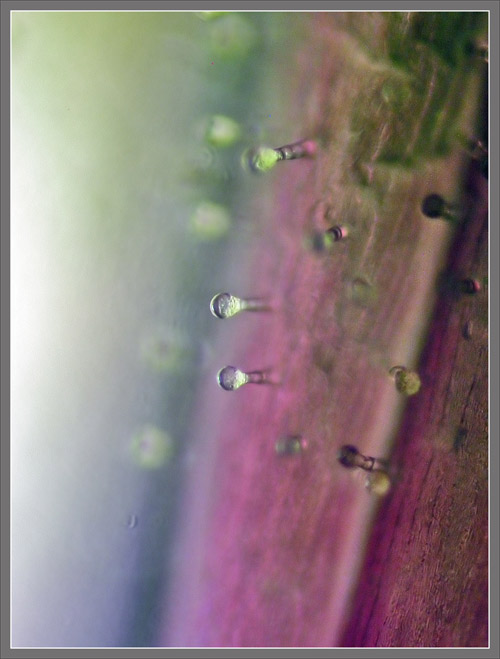“Of all the Houseleeks
neatest far
The jolly
Cobweb
Houseleeks are.”
Walter Ingwersen 1943
At
the
magnification shown below, it is apparent that both the
sepals, and
the flower’s petals are covered with fine hair-like
projections.
The whorl of pink petals is referred to as the flower’s corolla.
The petals of the flower grow
from
the edge of a yellow dome-shaped disk, and the male stamens grow
from a
ring where the petals meet the disk. Emerging from the
disk
itself is a group of bright red female pistils.
If the surface of a green
sepal is
examined under the microscope, the subtle green colouration is
reminiscent of a pastel painting. Note that a water mount
was
used, and this accounts for the occasional bubble in the field
of view.
Near the edges of a sepal,
some of
the glandular hairs seen earlier are visible. Notice that
the red
colouration in the glandular, bulbous tips is localized in two
distinct
areas!
The use of a different
lighting
technique emphasizes the bulbous tips of the hairs, but does so
at a
lower resolution.
More images of flowers at
different
stages of development follow. Next, we will look at one of
a
flower’s pink petals with the aid of the microscope.
Photomicrographs of the
surface and
edge of a petal can be seen below. Its cells are
irregular, both
in shape, and pink colouration. Hairs growing along the
petal’s
edge are visible in the second image.
A petal vein can be seen in
the
image on the left below. The image on the right reveals
the
presence of glandular hairs on the petal’s surface.
A higher magnification shows
the
longitudinal striations on the surface of individual cells (left
image), and the bulbous tips of glandular hairs (right image).
In the sequence of three
images
that follows, some of the anthers are covered by a thin purple
membrane
which hides the developing pollen grains beneath. In more
mature
anthers this protective purple membrane has disintegrated.
Notice the unusual surface
texture
of the anther at the centre of the left image. The image
at right
shows a membrane that has split longitudinally to reveal the
yellow of
underlying pollen grains.
When the membrane has
completely
disintegrated and fallen away, the remaining anther appears
considerably smaller. Each anther has two pollen releasing
pads,
with a darker central section that is connected to the
filament.
This forms a sort of anther ‘sandwich’.
The slightest contact is able
to
dislodge pollen from the anther, as can be seen in an area where
one
has touched the surface of a petal.
Below are photomicrographs
showing
the surface of a mature anther. The pollen grains can be
seen to
be ellipsoidal in shape.
Images showing pollen grains
adhering to the top of a filament (left), and the surface of a
petal
(right), can be seen below.
Ten bright red pistils, each
connected at its base to a pale green swollen ovary are visible
at the
centre of the flower shown in the two images that follow.
Under the microscope the
cellular
structure of the stigma and its supporting style can be seen
below. At the very tip of the pistil, the unusually short
lobes
that make up the surface of the stigma can be seen. In my
experience, these lobes are shorter than those in most flowers.
In the first image below, the
base
of one of a flower’s styles (red) is shown at the point of
connection
to its associated ovary (green). Note, in all of the
images, the
large swollen heads of the glandular hairs.
Hens and chicks are extremely
popular as rock garden plants. This popularity has
resulted in an
amazing number of ‘common’ names being given to the them.
A few
of them are: Houseleek, Jupiter’s Eye, Jupiter’s Beard, Thor’s
Beard,
Bullock’s Eye, Sengreen, Ayron, Ayegreen, Aaron’s Rod, Hens and
Chicks,
Liveforever, and Thunder Plant!!
Photographic
Equipment
The low magnification, (to
1:1),
macro-photographs were taken using a 13 megapixel Canon 5D full
frame
DSLR, using a Canon EF 180 mm 1:3.5 L Macro lens.
A 10 megapixel Canon 40D DSLR,
equipped with a specialized high magnification (1x to 5x) Canon
macro
lens, the MP-E 65 mm 1:2.8, was used to take the remainder of
the
images.
The photomicrographs were
taken
using a Leitz SM-Pol microscope (using a dark ground condenser),
and
the Coolpix 4500.
A Flower Garden of
Macroscopic Delights
A complete graphical index of
all
of my flower articles can be found here.
The Colourful World
of
Chemical Crystals
A complete graphical index of
all
of my crystal articles can be found here.
